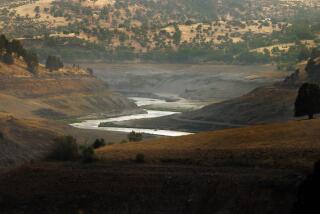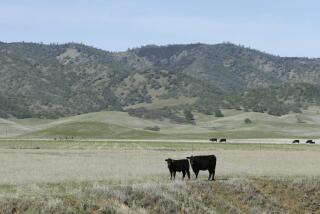Mekong Dam May Come With Peace in Southeast Asia : Development: Project would endanger wildlife, village life along the river, environmentalists say.
- Share via
BANGKOK Thailand — For decades, war blocked plans to harness the mighty, untamed Mekong River. Now that prospects for peace have brightened, environmentalists are drawing new battle lines.
Developers hope that at least one huge dam can be built across the 2,625-mile-long river, along with smaller ones on its tributaries, to provide energy and irrigation water.
The Mekong’s only dam is a small one built by the Chinese on its upper reaches. From the Tibetan plateau in China, the world’s seventh-longest river flows through Burma, Laos, Thailand, Cambodia and Vietnam, where it empties into the South China Sea.
Four potential sites for the large dam are being studied, said Chuck Lankester, head of the Interim Mekong Committee. All are in Laos or along the stretch of river that separates Laos and Thailand.
Lankester, an energetic Canadian, acknowledges that the dam would have some environmental and social cost. But he says that scrupulous attention would be paid to these factors and that his agency will not bow to political pressures for unsound development.
Lankester’s agency, a U.N. affiliate, was formed in 1957 to coordinate development of the lower Mekong River basin, with Vietnam, Thailand, Laos and Cambodia as members.
“There’s no perfect project,” he said in an interview, “but what do you want, nuclear power, lignite? Hydroelectric power is at least clean.”
The demand for energy in Thailand is growing dramatically. Vietnam will have significant needs in the future and Laos, one of the world’s poorest nations, can earn badly needed revenue by selling power to its neighbors, the agency said.
Environmentalists and residents who have seen destruction wrought by large dams in Thailand and elsewhere are not convinced.
“The Mekong is a wonderful river,” said Pisit na Patalung, head of Wildlife Fund Thailand. “It has provided so much for so many for so long, and now you want to change this? It should not be tampered with.”
He and others view the Mekong basin as a complex, self-regulating ecosystem that will deteriorate if interfered with, causing problems for some of the millions of farmers and fishermen who depend on it.
As an alternative, Pisit’s group and others recommend comprehensive energy conservation in Thailand’s booming, anything-goes economy as well as changes in consumer habits.
In 1990, The Ecologist, a British magazine, said the dams on the Mekong and its tributaries would “cause environmental disruption all across the Indochinese peninsula.” It accused Lankester’s agency of undervaluing such environmental and social issues as the relocation of villagers from dam sites.
Lankester described the article as biased and partly inaccurate, but concedes that there is reason for skepticism because of the region’s poor environmental record.
The issue is under debate as some progress is being made toward peace in Cambodia, the hostility between China and Vietnam shows signs of lessening and U.S.-Soviet rivalries in the region abate.
After the Interim Mekong Committee was established in 1957, wars in Indochina forced postponement of an ambitious plan for up to 20 major dams along the Mekong.
More problems arose when Cambodia was forced out of the agency after the Vietnamese invasion in December, 1978. All four countries along the river must reach agreement before projects can begin.
Recently, China and Burma have also been invited to join the agency.
Even if political problems are resolved, Lankester does not foresee completion of a large dam until early in the next century, because of the environmental studies required and billions of dollars in construction costs.
He said tributary dams, which attract most of the criticism, would probably be built sooner.
Villagers have protested the construction of a dam on the Pak Mool River in northeastern Thailand. Some environmental groups say it would open up some of the richest forest left in Laos to logging and poaching of elephants, tigers, clouded leopards, gibbons and other wildlife.
Construction of large dams in Thailand has been followed by deforestation, slaughter of wildlife and, in many cases, serious disruption of village life.
The Mekong, described as one of the world’s last great untapped sources of hydroelectric power, is unlikely to retain its pristine, rural character much longer, whether it is dammed or not.
Experts say the Mekong will see new bridges, more shipping, intensified agriculture and the development of industry along its banks.
More to Read
Sign up for Essential California
The most important California stories and recommendations in your inbox every morning.
You may occasionally receive promotional content from the Los Angeles Times.










